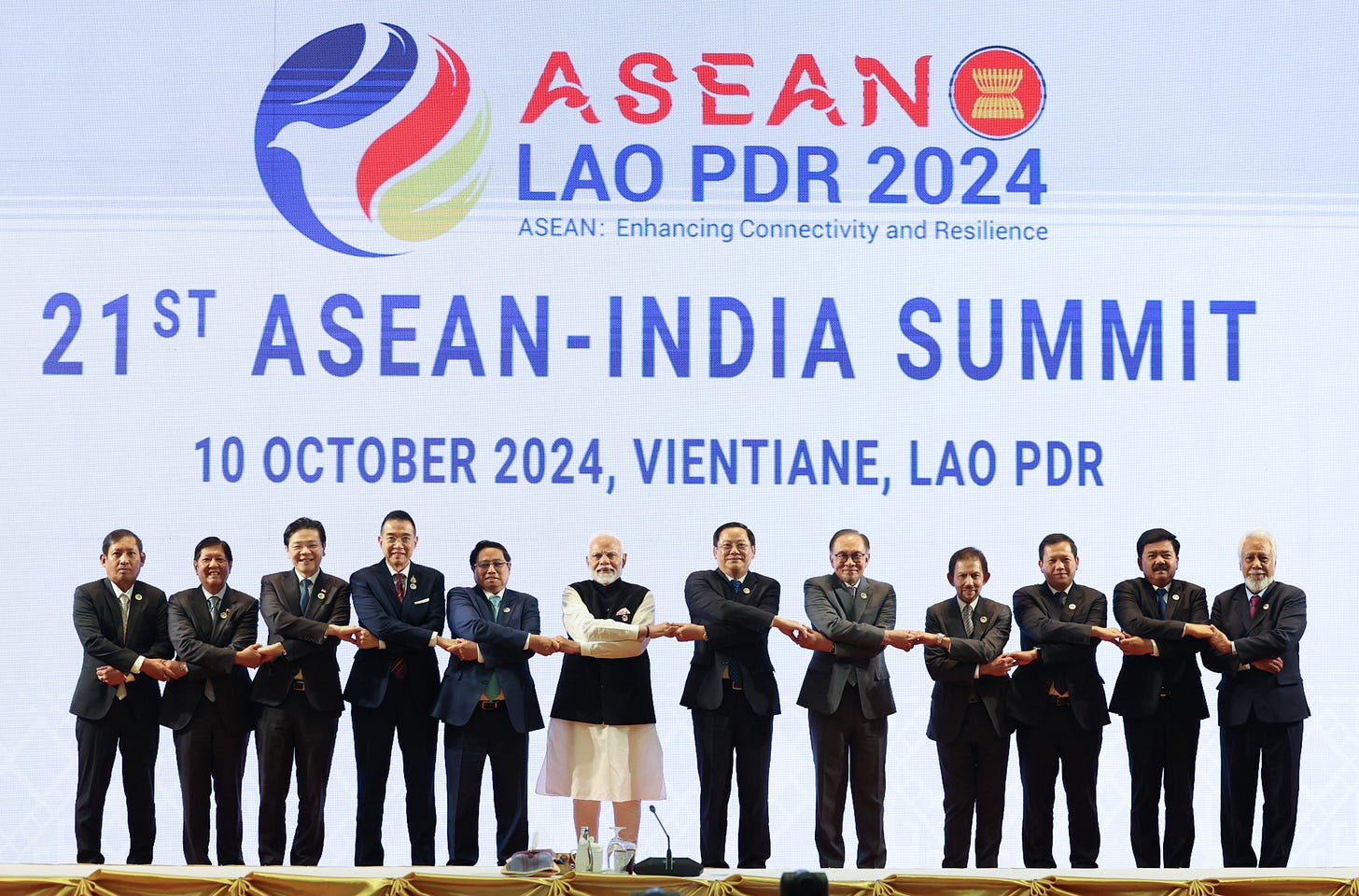Review: India's Southeast Asia Stakes and Foreign Policy Future
New book reveals how India should navigate its foreign policy challenges and opportunities in the Indo-Pacific and the wider world through a Vishwa Shastra.
A new book sheds light on how India should navigate Southeast Asia and the Indo-Pacific in its future foreign policy in the context of a more contested world and shifting regional trends.
WonkCount: 1,629 words (~7 minutes)
Review: India's Southeast Asia Stakes and Foreign Policy Future
Context
When Singapore’s revered diplomat Tommy Koh was said to have candidly characterized India’s involvement in ASEAN as “half in, half out” back in 2008, it was merely one reflection of the ambivalence among some in Southeast Asia about New Delhi’s role within the changing balance of power, despite individual countries like Singapore serving as platforms for its engagement1. Today, nearly two decades later and into Prime Minister Narendra Modi’s third term, India’s approach to Southeast Asia is being carefully watched as it positions itself as what Foreign Minister S. Jaishankar has characterized as a “leading power,” rather than a “balancing power” within strategic competition2. This involves not just region-specific initiatives like the Act East policy, but global visions like “Vishwa Mitra” (friend of the world) positioning itself across the so-called Global South or indigenizing efforts like “Atmanirbhar Bharat” (self-reliant India) that recalibrate links between domestic and foreign policy3.
Select Recent India-Southeast Asia Geopolitical and Geoeconomic Developments
A new book Vishwa Shastra: India and the World by scholar Dhruva Jaishankar provides a comprehensive outlook on India’s foreign policy future and Southeast Asia’s place in it4. The book unpacks the history of India’s ties with the world and charts out a multipronged strategy to advance New Delhi’s position. It does so through a detailed examination of inflection points familiar to close watchers of regional geopolitics and geoeconomics — including recent ones from India’s embrace of the Indo-Pacific concept to its withdrawal from the Regional Comprehensive Economic Partnership (RCEP)5. In doing so, it adds to a series of recent books about the interactions between India and its shifting regional and global landscape, including ones reviewed here on ASEAN Wonk. These include Avinash Paliwal’s India’s Near East analyzing the complexities of New Delhi’s neighborhood dynamics and Darshana Baruah’s The Contest for the Indian Ocean that adopts a multi-disciplinary, multi-actor lens to the strategic theater6. Vishwa Shastra runs just over 300 pages.
Analysis
The book provides a forward-looking view of where the world’s most populous nation is headed and the implications for regions like Southeast Asia. Following from the book’s title — roughly “a treatise on the world” in Sanskrit — Jaishankar argues that one can discern a “decidedly realist” Indian strategic outlook from prehistoric times to the present rooted in both domestic and geopolitical drivers7. This runs contrary to suggestions that India either lacks a strategic culture or has been driven more by ideological impulses like post-colonial resentment. Within the future of India’s grand strategy, Jaishankar notes that Southeast Asia ranks as a region of priority given its importance and New Delhi’s “frustrating” efforts to date relative to inroads elsewhere such as with the Quad countries or in the Indian Ocean8. Though India does rank highly on some individual metrics in Southeast Asia — fourth in military exercises and third in overseas visitors by one count — this is often not reflected in public or elite opinion because New Delhi ranks lower in geoeconomic areas that are more valued like supply chain integration and infrastructure financing9. “[M]uch work must still be done before India can play a sufficient balancing role,” the book notes before laying out a comprehensive approach for how it can do so10.
Vishwa Shastra also forecasts the outlook for India’s foreign policy in key areas that are important to watch and will be of interest to scholars, policymakers and businesses alike (see table below for a summary of these priority areas, along with major datapoints to watch and notable details. Paying subscribers can also read the rest of the “Analysis” section and “Implications” section looking at how these dynamics play out in the future)





